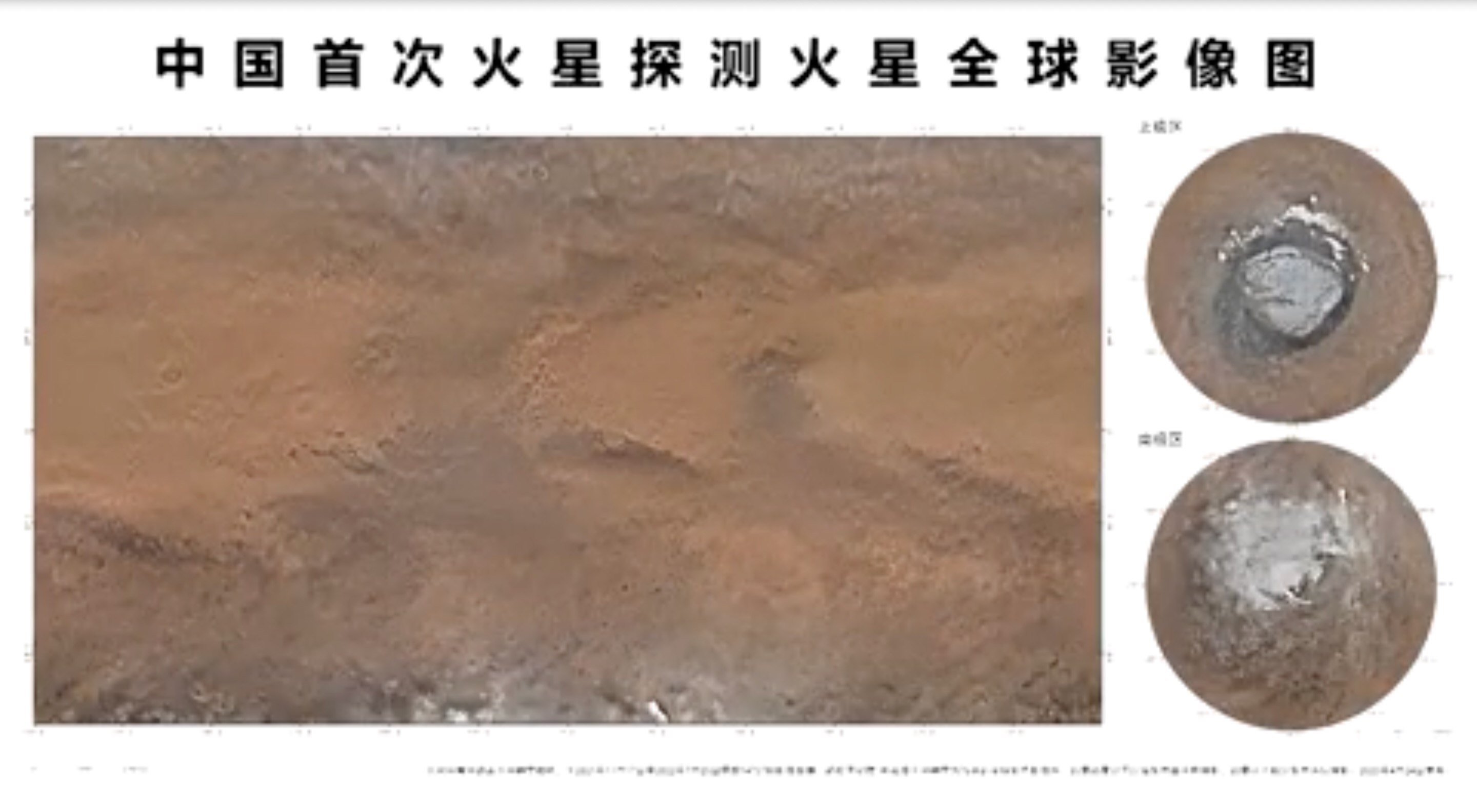
China's space authorities have released a series of global images of Mars produced from data gathered by the country's first interplanetary mission, Tianwen 1.
The images of Mars were released by the China National Space Administration (CNSA) and the Chinese Academy of Sciences (CAS) at an event marking China's national space day, held April 24 in the city of Hefei, in eastern China's Anhui Province.
The products from Tianwen 1 include an orthographic projection of Mars' eastern and western hemispheres and other types of sphere-to-flat surface projections. The images have a spatial resolution of 249 feet (76 meters) per pixel.
Related: The latest news about China's space program
The images were produced using data collected by Tianwen 1's medium-resolution camera over an eight-month period from November 2021 to July 2022, according to the China National Space Administration (CNSA). During this time, the spacecraft completed 284 orbits and captured 14,757 images of the surface.
"This full-color image of Mars not only provides a better-quality base map for our country's follow-up Mars exploration projects and scientific research, but also for our international colleagues' Mars exploration projects and scientific research," Zhang Rongqiao, chief designer of China's Mars exploration program, told Chinese broadcaster CCTV.
"I believe this is an important contribution Tianwen 1 made for deep space exploration, for all humankind,” Zhang said.
China's next Mars mission will be an audacious and complex sample return mission, expected to launch around 2030. The data from Tianwen 1 will help inform landing site selection for the mission.
Zhang also provided an update on the fate of the Tianwen 1 mission rover, Zhurong, revealing that the team believes the robot has experienced a greater than expected accumulation of dust on its solar panels and possibly may never be able to reactivate itself.
Additionally, 22 geographical features near the Zhurong landing site on Mars have been named after historic Chinese villages and formalized by the International Astronomical Union.
Follow us @Spacedotcom, or on Facebook and Instagram.







